Compare dishwashers in New Zealand with Canstar Blue. Bosch, Samsung, LG, Fisher & Paykel and Haier were compared Overall Satisfaction, Ease of Use, Design, Internal Layout, Performance & Reliability, Quietness and Value for Money.
See our Ratings Methodology.
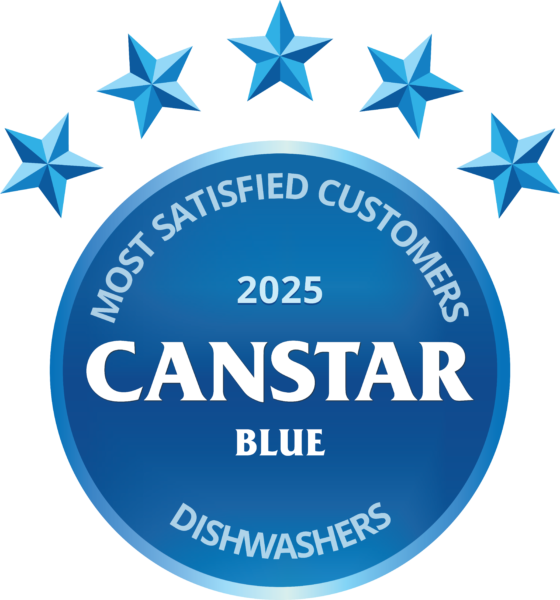
Kiwi consumers rate Bosch their No.1 dishwasher brand.

Our review compares dishwashers on customer satisfaction, so you can discover what other Kiwis think about our compared dishwasher brands before you go ahead and make a purchase. Think of it like asking hundreds of your closest friends and family which dishwashers they think are best!
Canstar Blue surveyed 465 Kiwis who had bought a dishwasher over the past five years for their feedback on the dishwashers they bought.
Respondents rate their satisfaction with their dishwasher brands from zero to ten, where zero is extremely dissatisfied and ten is extremely satisfied. Brand satisfaction was rated by respondents on the following criteria:
The winning brand is the one that receives the highest Overall Satisfaction rating once all the scores from the Overall Satisfaction criteria are combined and averaged.
Brands must have received at least 30 responses to be included, so not all brands available in the market have been compared in this survey. The brands rated in this survey are listed below in order of best overall satisfaction.

This is the second year in a row that Bosch has taken home our Dishwashers Award, and it does so with a fantastic set of top 5-Star ratings across all categories, except Value for Money, for which it achieves a great 4-Star rating.
It’s worth noting that Bosch is the only dishwasher brand in this year’s ratings to earn multiple 5-Star ratings, which is a remarkable feat that highlights how highly Bosch’s customers regard their appliance purchases.
German appliance manufacturer Bosch is synonymous with quality and design, and many of its models are made in Germany. Its range of 22 dishwashers incorporates both two- and three-rack options and include cutlery baskets. Bosch’s dishwashers are split between integrated and standalone units and boast features such as EcoSilence Drive, for whisper quiet operation, wireless connectivity and HygienePlus, an extra-hot rinse.
![]()
Placing second on our awards table, Samsung earns great 4-Star ratings across all categories except one, Value for Money, for which it achieves a top 5-Star rating.
Samsung’s 5-Star rating makes it only one of two dishwasher brands, along with our award-winner, Bosch, to achieve a top rating from Kiwi consumers.
Samsung’s range incorporates just five models: one integrated and four standalone models. Standalone models offer between 13-15 place settings, and come with features including sanitise, half-load and adjustable shelving.
Samsung’s integrated model features auto door open and internet connectivity; an optional front door panel can be colour-matched to Resene paint shades.

LG places third in our awards ratings by achieving a great set of 4-Star ratings across all our categories, including Overall Satisfaction, Performance and Value for Money.
LG is a multinational electronics company that is based in South Korea. It produces a wide range of electronic goods and home appliances. In New Zealand, it retails nine models of dishwasher offering 14- and 15-place settings, including one integrated model.
Models offer features including: QuadWash technology, ensuring cleaning from multiple angles; TrueSteam, to tackle stubborn grime; EasyRack, for easy loading; plus wi-fi connectivity.
![]()
Fisher & Paykel scores impressive 4-Star ratings across all categories except for Value for Money, for which it has a 3-Star rating.
Fisher & Paykel is a brand synonymous with appliances in NZ, especially the dishdrawer dishwasher. Across its four ranges – the 5, 7, 9, and 11 Series – Fisher & Paykel retails 37 different models.
The options range from single dishdrawer 7-place units and 14-place dishwashers, up to double dishdrawer machines, in a choice of freestanding, built-under or integrated models.
All Fisher & Paykel dishwashers earn energy ratings of between 3.5 and 4.5 stars and water ratings of between 4.5 and 5.5 stars, and boast functions including extra-hot sanitise wash cycles, special dry settings for plastics and flexible internal layouts.

Rounding out this year’s ratings table, Haier earns 3-Star ratings across all our award categories. While not a stand-out result, a 3-Star rating isn’t a measure of dissatisfaction. Rather Haier’s tally of 3-Star ratings indicates that its consumers are still happy with their dishwasher purchases.
Haier was founded in China in 1984 and is the owner of Fisher & Paykel. Here in NZ, the brand is often considered a cheaper alternative to Fisher & Paykel products, delivering great design and features at an affordable price.
Its range of dishwashers covers 17 machines that offer between 10-15 place settings. Its mid-range units feature 5-star water ratings, six wash settings – including auto wash, glass and eco – plus Thermo Dry, for better drying results.
Haier’s top-of-the range steam dishwashers feature: steam-sanitise modes, 5.5-star water ratings and 4.5-star energy ratings, plus wi-fi connectivity.
Not all dishwasher brands in the market qualify for our ratings (based on minimum survey sample size), but that doesn’t mean they’re not worth considering. Here are more brands to check out before making a purchase decision.
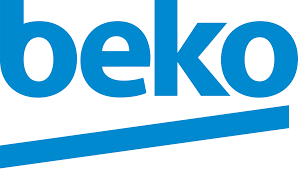
Beko is a Turkish company that is one of Europe’s biggest appliance manufacturers. Here it sells a range of seven freestanding dishwashers (14- and 16-settings), plus one integrated and one built-under model, both 14-settings. Its 16-setting dishwashers have 4-star energy ratings, and all Beko models come with a five-year warranty.
Electrolux is a Swedish appliance company. It’s a premium brand that sells a range of three 14- and 15-setting dishwashers. Reflecting Electrolux’s prestige branding, its dishwashers have top-of-line features, including sterilise settings, air drying, superfast washes and comfort-lift swing-out racks.
![]()
Miele is a German premium brand that manufactures a wide range of home appliances. Its range of freestanding, built-in and integrated dishwashers spans 22 models, from smaller entry-level 14-setting dishwashers to top-of-the-range 15-setting, fully integrated smart units.

Smeg is a premium appliance brand, designed and built in Italy, that has a reputation for delivering great style as well as performance. Smeg retails a range of 16 dishwashers in New Zealand, both freestanding and built-in models, either 14- or 15-settings.
 Westinghouse
WestinghouseWestinghouse is an Australian brand that has been producing quality cooking appliances for over 60 years. It retails one built-under model and ten freestanding units. Westinghouse dishwashers have between 13-15 settings, and offer features including AutoDoor, FastDry, and SensorWash, that automatically adjusts wash settings to match the dirtiness of your dishes.
Many modern dishwashers come with a range of cool and sophisticated features, for example wi-fi connectivity and super-hot sterilising functions. But what do the consumers in Canstar Blue’s latest research reveal to be the most important features and functionalities behind their appraisals of their dishwasher purchases?
The answer is straightforward: Performance & Reliability. Nobody likes to find food stains remaining on cutlery, plates, pots and pans at the end of a wash. Overall, more than a third of respondents (37%) cite performance as their biggest concern.
The quality of a machine’s wash performance places well above that other perennial dishwasher concern, Value for Money, which was the major factor for a quarter of survey respondents.
And it’s interesting that Design is the third most important factor, beating more practical considerations, such as Ease of Use and Internal Layout.
Here’s the full rundown of what the dishwasher consumers in our survey say are the main things they consider when rating their purchases.

If you’re in the market for a new dishwasher, apart from the best appliance brand, what do you need to consider before making your purchase. Canstar Blue walks you through what to consider when buying a new dishwasher:
The first thing you need to consider is a dishwasher’s load size. When quoting a dishwasher’s capacity, most manufacturers describe it in terms of the number of place settings it can hold.
A place setting refers to the standard amount of crockery and cutlery a person uses during a three-course meal. This generally includes one bowl, one plate, a knife/fork/spoon combination and a cup.
When choosing the right size dishwasher, you need to consider the number of people in your household and how many place settings they’re likely to use during a day. Remember to include snacks and extra mugs and glasses in your calculations. As a rough guide:
|
Size of household (people) |
Place settings (per day) |
|
1-2 |
6-9 |
|
2-4 |
9-12 |
|
4+ |
12+ |
Once you’ve figured out the capacity of your dishwasher, the next step is to determine which dishwasher will fit in your kitchen.
Of course, you need to ensure that your new dishwasher fits your kitchen, so carefully measure the dimensions of the space in your kitchen before you buy.
Dishwashers come in various sizes. The smallest slimline ones have a width of approx 45cm, while the standard size is 60cm.
It’s crucial to measure the correct size, as 5mm can be the difference between fitting snugly, and having to remodel your kitchen benches. So follow the old tried-and-tested rule of measuring twice!
There are four main types of dishwashers:
|
|
Integrated dishwashers
|
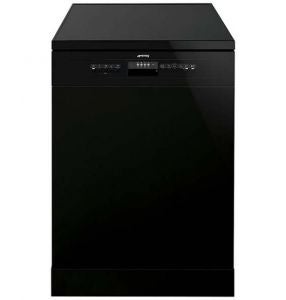 |
Freestanding dishwashers
|
|
|
Drawer dishwashers
|
|
|
Compact dishwashers
|
To narrow down your choice of dishwasher further, take into consideration the following features:
Every dishwasher in New Zealand carries an energy efficiency label that displays:
The energy efficiency of a model can have a big impact on its running costs, and can save you money on electricity over its lifetime. The below numbers are based on running a dishwasher at the large end of the scale, used once every day.
Capacity (place settings): 15
Average number of uses per week: 7 | Based on average 35.67c p/kWh
| Star rating | Annual energy use | Annual running cost |
| Two | 504 kWh | $180 |
| Four | 247 kWh | $88 |
Based on the above usage, the running costs over five years are:
This is a total difference in running costs of $460
These numbers do give pause for thought, especially as an appliance may well last ten years. Even a half-star difference between models has the potential to add up significantly over time.
Most non-basic dishwashers come with multiple different wash cycles, that cover how heavy your load is, the time of day and whether you’re looking to save on your energy bill.
The two-most common cycles are eco-mode and half-load cycles. Although high-end machines also feature settings such as advanced drying and super-hot sterilising modes.
However, most people end up using just one fixed setting, so don’t make the mistake of thinking more wash cycles = better for you. Choose a dishwasher that features wash modes you think you will actually use.
If you have a collection of different sized pots, pans and crockery that you use on a regular basis, or large wine glasses, then having a dishwasher with adjustable shelving and interior layout options is a must, to make the most of the washing space.
Many electricity providers offer off-peak power plans with reduced cost or even free power during the day, weekends and overnight. Having a dishwasher that allows you to set the start time of a wash cycle allows you to make the most of these power deals, which could save you hundreds of dollars on your power bills.
This one is self-explanatory: nobody likes noisy kitchen appliances, so you check the noise level of your chosen dishwasher before buying it. Most manufacturers list the noise level of their dishwashers in their model specs.
Replacing an existing dishwasher is a relatively simple procedure. It usually requires little more than unscrewing a few plastic pipes to connect your new appliance to your sink’s plumbing. However, if you are installing one in your kitchen for the first time, you’ll need to consider:
If you are confident in your plumbing skills, then by all means DIY. However, if not, then it’s best to leave it to a professional. Most plumbers offer dishwasher installation services. And while paying someone to install your appliance can be a little pricey, it also ensures the job is done quickly and without any hassle.

Rather like being good at Tetris, there’s an art to loading your dishwasher to ensure all your pots, pans and plates come out sparkling. Canstar reveals how to load your dishwasher the right way.
Make sure you’re loading from back to front to fit in maximum dishes. Thin plastics like takeaway containers should be stacked on the top rack to prevent them from melting. Put bowls and cups facedown or on an angle so they don’t collect puddles of water, and keep plates on the bottom shelf, where the spray is strongest. Avoid over-cluttering, if the water can’t reach something, it won’t get cleaned.
While glassware belongs on the top rack, cups and glasses shouldn’t be placed on top of the tines (the pointy sticks dishes sit between on the rack of the dishwasher). Instead, place them between the tines to prevent cracks occurring if they bump against each other during a cycle.
Avoid loading your dirty plates in a single direction. Arrange them all facing the center, so they have even access to the soap and sprayer. Alternate between large and small sizes when you’re loading, too, to give them the best water flow.
Rinsing dishes before loading them into a dishwasher wastes water and time. Dishwasher detergents are designed to cling to food particles and separate them from their surfaces, so just scrape off large food scraps into the bin and leave the rest.
Most dishwashers offer a range of programs, delivering different power consumption and water-usage levels. Even though an eco-wash might take longer, overall it could use less than half the electricity of a normal wash.
Avoid putting sharp knives and wooden spoons in a dishwasher, as the heat can degrade them. Items like big plastic serving spoons and spatulas should lie flat in the top rack. Loading them in the utensil basket can block the spray from reaching other utensils.
Ever lived with someone pedantic about the perfect and upright placement of cutlery in the dishwasher? Turns out it’s not actually worth it. It’s better to alternate their directions, with some handles facing up and others down, to keep them from falling into each other. You’ll get a more even clean this way.
Don’t overload your dishwasher, as your dishes might not clean properly.
Large things such as cutting boards and casserole dishes should go at the back or sides of your bottom rack. If bulky items at placed at the front, it’s possible they’ll block the soap dispenser and prevent detergent from reaching the rest of the dishes.
Avoid washing cast iron, copper and non-stick pans. They all need a little more love and care, so hand wash them. Also, anything with adhesive labels isn’t the best for a dishwasher, as they can come off and clog the dishwasher’s mechanisms. Either remove labels from items before placing in the dishwasher, or simply wash the items by hand.

Although it spends its time cleaning, it’s a good idea to regularly clean your dishwasher, as grime and grease can build up in its nooks and crannies, and this can stop it from cleaning efficiently.
Commercially available dishwasher cleaning liquids and tablets are considered the best option to clean your machine’s interior of gunk and foul smells. These products are specially designed to dissolve and remove grease, limescale, detergent build-up, hard water stains and odours. Dishwasher cleaning products from brands like Finish and Shine are relatively cheap and available from most supermarkets.
It’s not advised to use bleach to clean your dishwasher, especially if it has a stainless steel interior or stainless steel parts. This is because bleach and other chlorine cleaners contain an oxidising agent that can stain and damage the chromium oxide layer of stainless steel.
Yes, generally speaking, it’s safe to clean your dishwasher with vinegar and some good old elbow grease. Vinegar is a great DIY, natural cleaning solution that you can use at home to help remove gunk and odours from inside your dishwasher. Vinegar can also be used for cleaning microwaves and ovens.
However, a note of caution, some dishwasher manufacturers advise against using vinegar for cleaning appliances due to its acidity and the risk of potentially damaging sensitive internal parts. It’s best to check your dishwasher’s instructions manual first.
Some filters are self-cleaning, although most modern dishwashers have filters that need to be cleaned manually. The filter is where the majority of the gunk build-up occurs. A clogged filter is what typically causes blockages, draining issues and bad smells. With the internal filter removed, you should be able to have a look at the drain, and remove any gunk build-up. To clean the filter itself, simply run it under warm water and use an old toothbrush to lightly scrub and brush off food particles and grime.
If your dishwasher isn’t cleaning like it used to, a blocked spray arm could be the cause. Food particles, grease, and grime build up inside your machine over time and this gunk can then become lodged in the spray jets and stop them from flowing freely. Once you’ve removed the spay arms from inside the machine, soak them in white vinegar to loosen any hard water deposits. Then use a toothbrush to clear out any obstructions of the water exit holes.
If there’s a pool of water left in the bottom of your dishwasher after each cycle, a blocked drain could be the culprit. Food-related debris and other foreign objects (i.e. small spoons, etc.) can sometimes get stuck, block the drain trap and stop it from working properly. You can remove most obstructions from the drain trap with a cloth or toothbrush. But if the problem is more severe, you may need the help of a professional plumbing service.
Unfortunately, it’s impossible to avoid hard water deposits, also known as calcium deposits. These are minerals deposits left behind when the water inside your machine dries. Hard water deposits gradually collect inside the dishwasher and in plumbing fixtures over time. They typically appear as a white or green scale with a chalky texture but can be removed easily with a descaling solution.
If you use your dishwasher daily or every few days, it’s recommended to clean your dishwasher at least once a month. Doing so will maintain its cleaning efficiency and erase food build-up inside the appliance. Regular upkeep is also advised to extend the lifespan of your machine. Here’s a quick guide:
 Bruce Pitchers is Canstar NZ’s Content Manager. An experienced finance reporter, he has three decades’ experience as a journalist and has worked for major media companies in Australia, the UK and NZ, including ACP, Are Media, Bauer Media Group, Fairfax, Pacific Magazines, News Corp and TVNZ. As a freelancer, he has worked for The Australian Financial Review, the NZ Financial Markets Authority and major banks and investment companies on both sides of the Tasman.
Bruce Pitchers is Canstar NZ’s Content Manager. An experienced finance reporter, he has three decades’ experience as a journalist and has worked for major media companies in Australia, the UK and NZ, including ACP, Are Media, Bauer Media Group, Fairfax, Pacific Magazines, News Corp and TVNZ. As a freelancer, he has worked for The Australian Financial Review, the NZ Financial Markets Authority and major banks and investment companies on both sides of the Tasman.
In his role at Canstar, he has been a regular commentator in the NZ media, including on the Driven, Stuff and One Roof websites, the NZ Herald, Radio NZ, and Newstalk ZB.
Away from Canstar, Bruce creates puzzles for magazines and newspapers, including Woman’s Day and New Idea. He is also the co-author of the murder-mystery puzzle book 5 Minute Murder.
Only run dishwasher when full: 72%
Rinse everything before putting it in dishwasher: 57%
Energy and water-saving ratings played big part in choice of dishwasher: 37%
Run dishwasher during off-peak/free power periods to save money: 30%
Canstar Blue surveyed 2501 New Zealand consumers across a range of categories to measure and track customer satisfaction, via ISO 26362 accredited research panels managed by PureProfile. The outcomes reported are the results from customers who had purchased a dishwasher in the past five years. In this case, 465 New Zealanders. Brands must have received at least 30 responses to be included. Results are comparative and it should be noted that brands receiving three stars have still achieved a satisfaction measure of at least six out of 10. Not all brands available in the market have been compared in this survey. The ratings table is first sorted by star ratings and then by mean overall satisfaction. A rated brand may receive a ‘N/A’ (Not Applicable) rating if it does not receive the minimum number of responses for that criterion.
The past winners from Canstar Blue’s Dishwasher ratings:
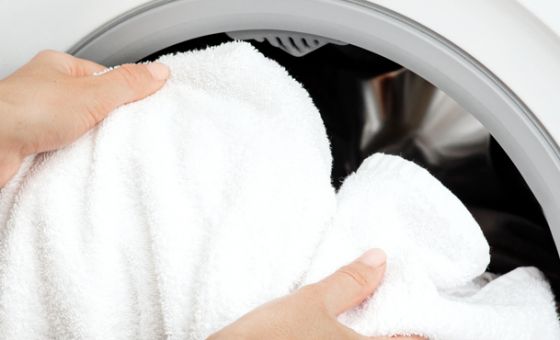
Appliances - June 23rd
KEY POINT
According to 452 New Zealand tumble dryer buyers who took part in Canstar’s 2025 Dryer Award survey, LG is the best dryer brand in New Zealand for delivering consumer satisfaction.
If you’re in the …
– Read more
Best-Rated Dishwashers - March 28th
Why do I need to clean my water bottle/travel mug?
Cleaning your water bottle or travel mug regularly is essential for several reasons:
Hygiene: bacteria, mould, and other microorganisms can accumulate in your water bottle or …
– Read more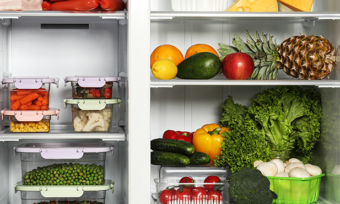
Appliances - March 26th
What is a top fridge-freezer?
A top fridge-freezer refers to a type of refrigerator-freezer unit where the freezer compartment is located at the top of the appliance, above the refrigerator compartment. In this design, the freezer …
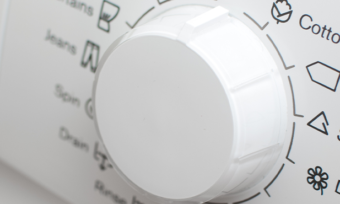
Best-Rated Dishwashers - March 18th
Why do delicates need to be washed differently?
Delicate items, like silk blouses or lace lingerie, need special care when washing because they’re made of fragile fabrics or have intricate details. Regular washing machines and harsh …

Barrel Vacuum Cleaners - February 20th
Kitchen appliances
Air fryers
3.75L Air Fryer ($85)
If it’s your first time buying an air fryer, or you’re not willing to break the bank, consider Kmart’s affordable 3.75L air fryer. Prepare delicious, crispy fries, nuggets and more …